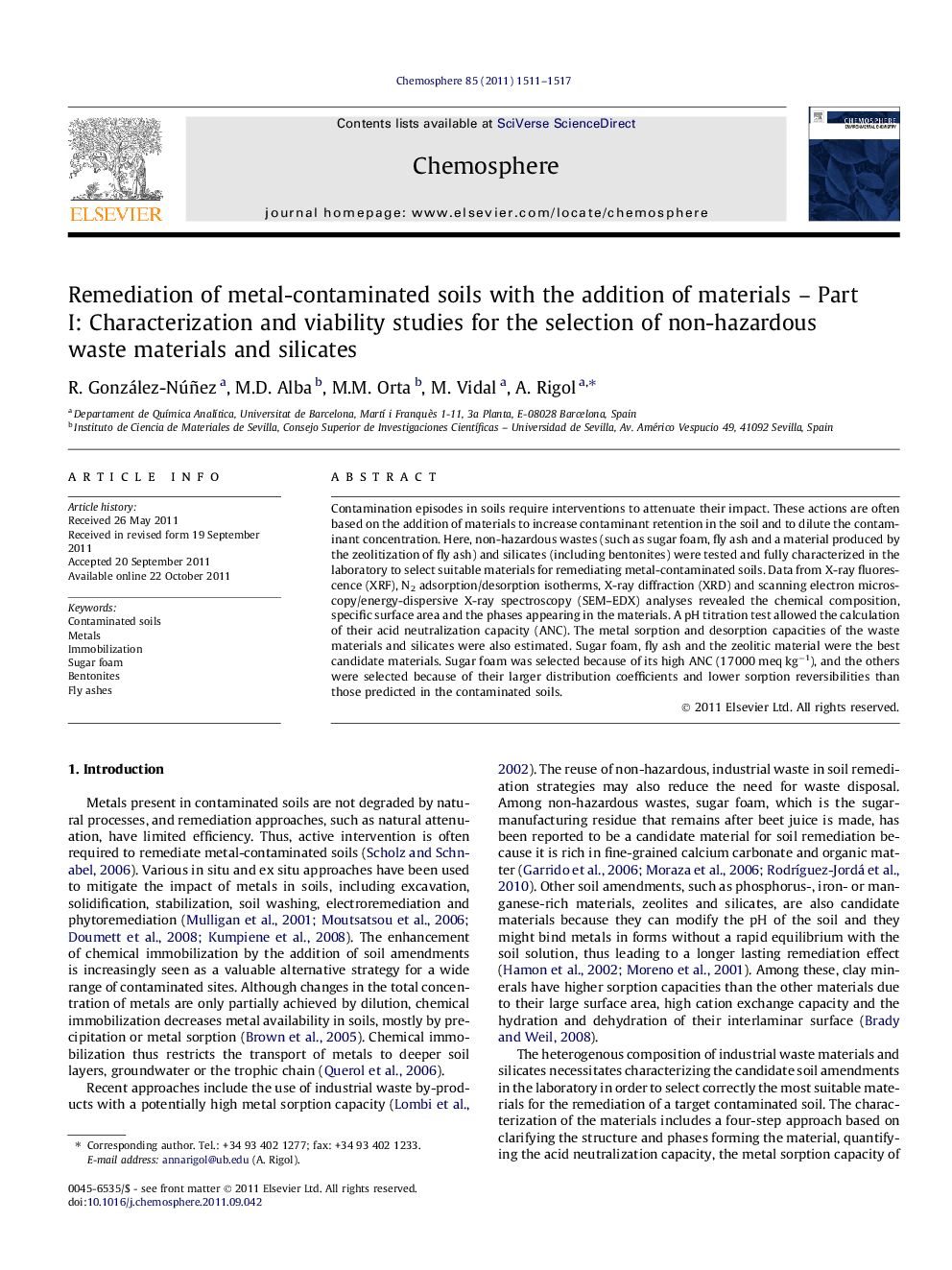| Article ID | Journal | Published Year | Pages | File Type |
|---|---|---|---|---|
| 4410490 | Chemosphere | 2011 | 7 Pages |
Contamination episodes in soils require interventions to attenuate their impact. These actions are often based on the addition of materials to increase contaminant retention in the soil and to dilute the contaminant concentration. Here, non-hazardous wastes (such as sugar foam, fly ash and a material produced by the zeolitization of fly ash) and silicates (including bentonites) were tested and fully characterized in the laboratory to select suitable materials for remediating metal-contaminated soils. Data from X-ray fluorescence (XRF), N2 adsorption/desorption isotherms, X-ray diffraction (XRD) and scanning electron microscopy/energy-dispersive X-ray spectroscopy (SEM–EDX) analyses revealed the chemical composition, specific surface area and the phases appearing in the materials. A pH titration test allowed the calculation of their acid neutralization capacity (ANC). The metal sorption and desorption capacities of the waste materials and silicates were also estimated. Sugar foam, fly ash and the zeolitic material were the best candidate materials. Sugar foam was selected because of its high ANC (17 000 meq kg−1), and the others were selected because of their larger distribution coefficients and lower sorption reversibilities than those predicted in the contaminated soils.
► The ability of wastes and silicates to increase metal retention in soils is assessed. ► A four-step approach is proposed for the characterization of candidate materials. ► Structural analysis is performed to confirm pure phases present in the materials. ► The acid neutralization capacity and metal sorption pattern are obtained for materials. ► Sugar foam, fly ashes and zeolitic material are the recommended materials.
